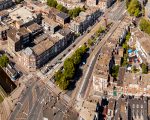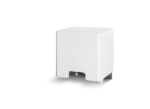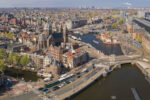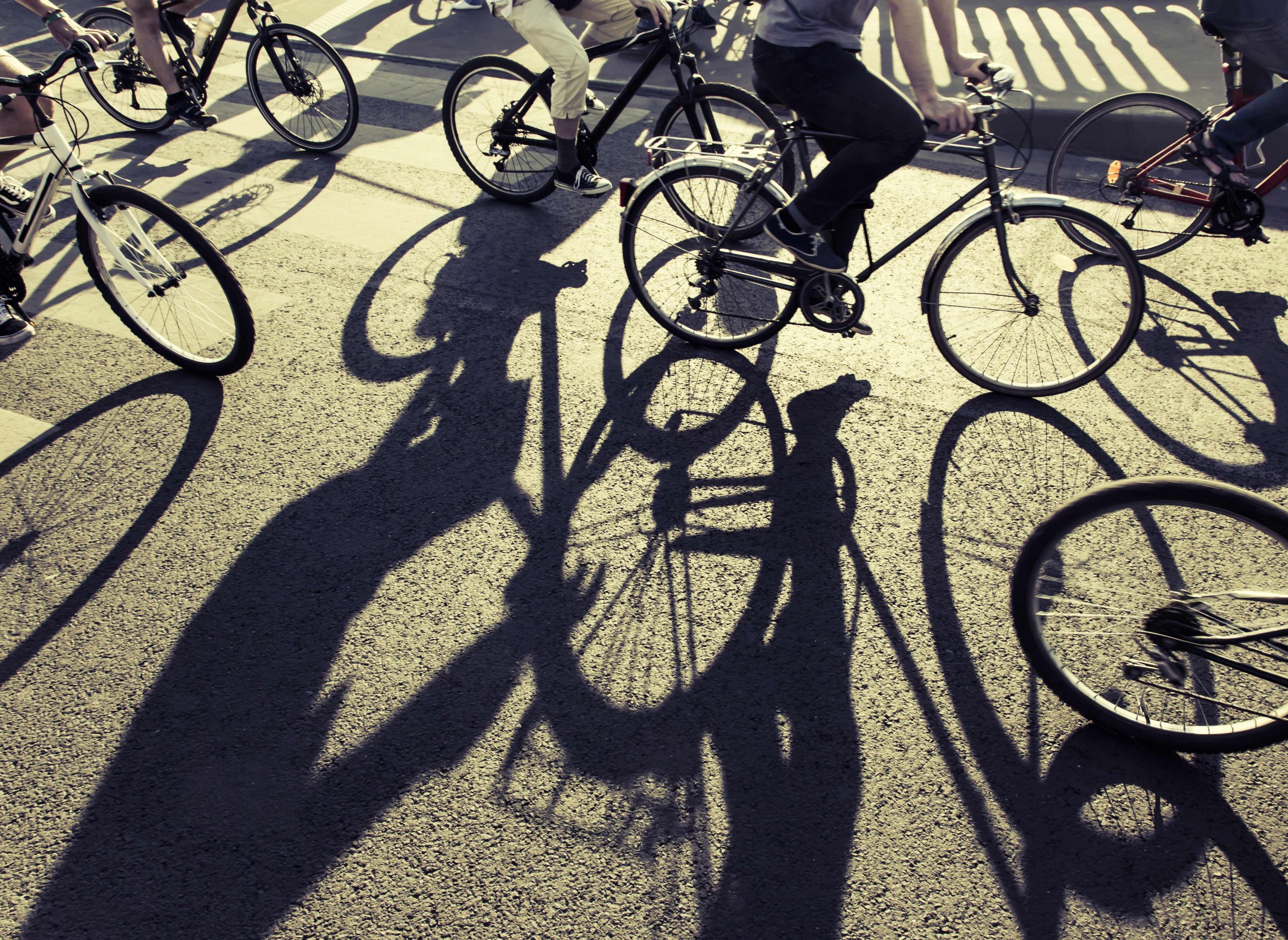
Traffic technology for cycling comes of age
Bikes are going like the wind. In the struggle against carbon emissions, policymakers can’t ignore this, the greenest mode of transport. But climate change is just one of many reasons why cycling is popular. Bikes have a lot of advantages. They take up less space than cars, and inner cities are often short on space. Bike travel times are frequently shorter than car travel times in inner cities, and cycling has health benefits. But the very success of cycling is also posing new challenges. New forms of traffic technology can help to stimulate cycling and keep it on the right track.
More and faster bikes
The growth in bike numbers is also one of cycling’s greatest challenges. If more and more people are taking up cycling, it is going to get crowded on bike lanes. This can compromise traffic safety and turn bikes into a traffic issue in their own right, including unpleasant and unsafe situations and congestion. Extending and widening bicycle lanes and waiting zones at busy intersections can help ease the pressure. But more is needed if cycling is to remain attractive and safe.
Another challenge is the unstoppable rise of the electric bike. This silent revolution has major consequences. Speed pedelecs, with their speeds of up to 45 km/h, are causing dangerous situations on bike lanes. The higher speeds and the greater speed differences between different categories of cyclists result in higher risk for this group, which is already vulnerable and includes children and elderly people.
All in all, bikes are both a solution and an issue. Technology can help us face the challenges and support urban bike policies. But if this is to happen, bikes will have to be given their own place in technology, both when it comes to developing new technologies and to implementing existing ones. For instance, by designating dynamic or permanent cycle corridors through cities and by optimizing traffic control for cyclists. But also by developing traffic technology that is geared to cyclists.
Monitoring, information and recommendations for cyclists
To create an effective cycling policy, we first need more insight and accurate information about cycling traffic. What routes do cyclists take through cities? When do they take them and how heavy is cycling traffic on these routes? Where are the bottlenecks and potentially dangerous situations located? In the past, the only way to count cycling traffic was to do it manually. But better monitoring technology has changed that. Smart sensors at strategic locations in the city can count bikes (and indeed pedestrians). Using intelligent algorithms, it is now possible to determine the cyclists’ travel times and routes across the city – while fully respecting privacy legislation!
Once we have this crucial information, we have to devise concrete improvements. Technology can be used to provide cyclists with targeted information, for instance through dynamic information panels that are suited for use along bike lanes. They are like the traditional route information panels above motorways, but proportioned to fit the more human dimensions of cyclists, and display information that is specifically related to cycling. Traffic controllers can use these to guide cyclists away from congested intersections by displaying recommended alternative routes that are quieter, cleaner or even quicker, or by separating speed pedelecs from other cycling traffic at busy times.
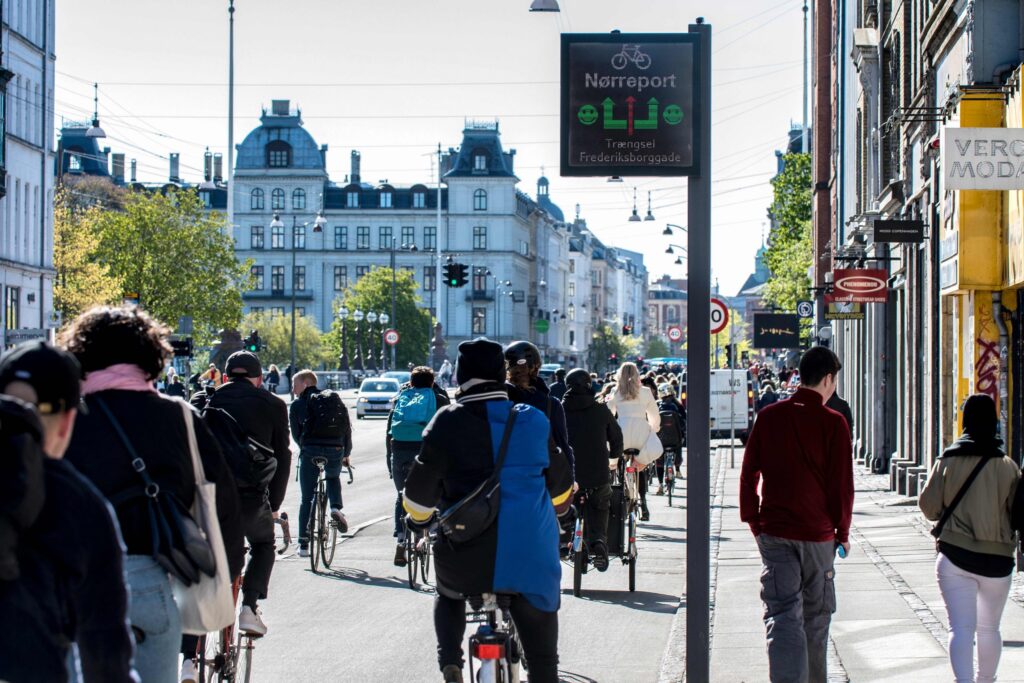
We could even go a step further. If we combine our knowledge and information about cyclists and cycle routes with other information, it is possible to offer cyclists even better support. For example, by providing information about road works, bike lane closures, or places where snow has not yet been cleared. Or by using meteorological information to lengthen green time for cyclists in the city if it is raining.
Once cities have sufficient insight into the various modes of transport – motorized traffic, bikes, pedestrians etc. – technology can even be used to dynamically regulate the use of available road space. Thus, seaside towns could reserve more space for cyclists, pedestrians and public transport on sunny days, or assign lanes to cyclists at certain times and to cars at other times. There are many options that merit further examination.
Cooperative traffic technology – also for cycling
In the world of traffic management, a lot is currently made of C-ITS (Connected Intelligent Traffic Systems) and CCAM (Cooperative, Connected & Automated Mobility). The basic underlying idea is that greater security, reduced environmental impact and improved flow can be realized through connection, cooperation and interaction between traffic management systems, roadside equipment and traffic participants. Here, too, cycling will have to be given its due. The first steps have been taken. In Copenhagen, cyclists (like cars and freight traffic) are receiving speed recommendations through apps, so that the lights are green as soon as they get to an intersection. In effect, everyone has their own green wave. A pilot was carried out in the same city with dimmed street lighting that becomes brighter as soon as a cyclist passes. The time is ripe for more cooperative traffic technologies for cyclists.
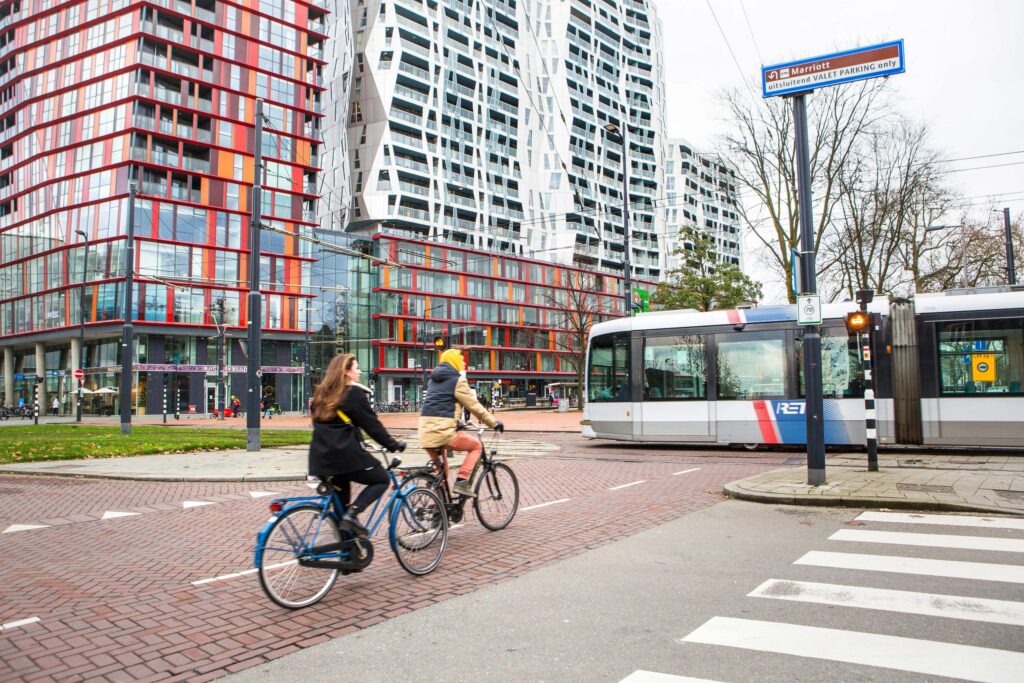
The future is multimodal
Further stimulating bike use will continue to be mainly a case of vision and policy. Technology can offer no magic solution, but it can certainly make a positive contribution. In any case, it is clear that the future of traffic management will be multimodal. Cars will have to share their prominent place in the center of attention not only with bikes, but also with pedestrians, public transport and shipping traffic. Our technological mobility solutions will be a strong aid to these developments.
TNL’s cycling solutions
TNL Move, together with clients but also independently, has developed mobility solutions that are wholly or partially oriented to cyclists. To give a few examples:
- Variable Message Signs – dynamic information panels suited for use along bike lanes.
- GreenCatch – an app that gives speed recommendations to traffic users to ensure that the lights are green when they arrive.
- FlowCube – smart traffic sensor which monitors such things as numbers, travel times, route information and other information about all modes of transport.
- MobiMaestro – traffic management platform with an open architecture that is available for all modes of transport.
